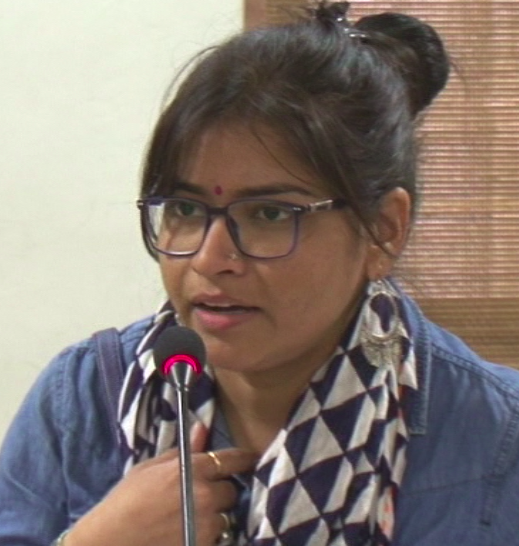Session 2. Cartographies of the online: Revisiting locations and intersections
Speakers
Ranu Tomar, School of Media and Communication, Jagran Lakecity University, Bhopal
Aalen Issac, Karmaveer Bhaurao Patil College, Mumbai
Archana Kaware, TISS, Mumbai
Asaf Ali Lone, Independent researcher and Saumya Bhandari, Ahmedabad University
Chair
Bishakha Datta, Point of View, Mumbai
Ranu Tomar, School of Media and Communication, Jagran Lakecity University, Bhopal
Ranu’s paper was based on interviews with women journalists in Madhya Pradesh, central India. The research revealed that the power structures operating in the offline world prevent women from tapping into the opportunities offered by the digital. Unequal gender power relations offline are reinforced online. Even though news has traveled online, most women journalists in Madhya Pradesh continue to carry out their work predominantly offline. When women journalists are visible online, they receive threatening messages, and when they try to make a formal complaint, institutional mechanisms refuse to acknowledge the violence.
Although Hindi is celebrated as a national language, research on the lived experiences of journalists working in Hindi print media is missing, and so experiential narratives became primary sources. Many journalists were afraid of being on social media, despite having spent many years in the profession. The ease of actualizing ‘revenge’ on virtual spaces has led many of the women journalists to avoid being present there altogether.
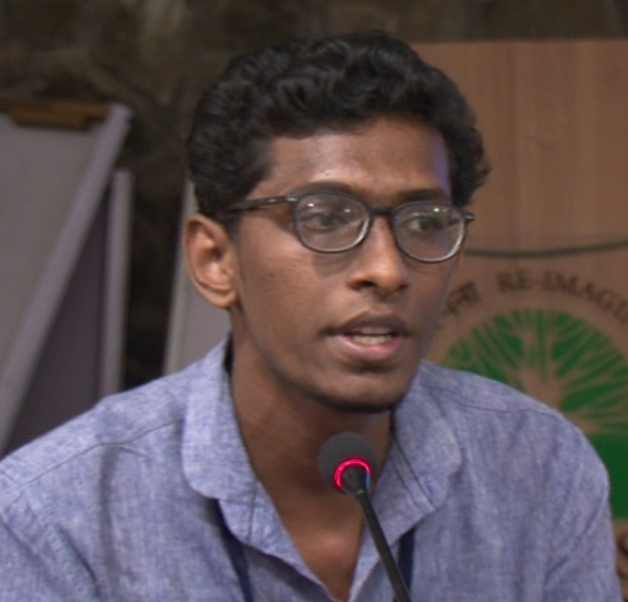
Aalen Issac, Karmaveer Bhaurao Patil College, Mumbai
Memes are a popular method of humor online. A meme acts as a unit for carrying cultural ideas, symbols, or practices. Memes are the cultural analogue to genes in that they self-replicate, mutate, and respond to selective pressures. Humor reflects social perceptions, including sexism. Hence, in order to further explore the connection between popular humor online and sexism in the Indian context, as part of the research for the paper presented, a survey was conducted in which participants’ reactions to sexist memes were gauged through a specific set of questions to five chosen memes. The survey covered 146 participants across age groups, of whom 48% identified as male, 48% as female, and the rest 4% chose not to disclose their gender identity. It was observed that only when memes are explicitly sexual are they seen as sexist. Memes which are gender-discriminatory and contain disparaging remarks are not likely to be perceived as sexist. Further, it is largely men who refuse to accept that certain memes are sexist. The survey revealed that the element of humor often lets people gloss over the sexism that these memes exhibit.
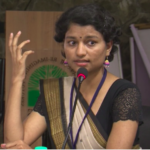
Archana Kaware, TISS, Mumbai
Maratha Kranti (Muk) Morcha was a political movement that emerged in 2016, in response to the rape and murder of a 14-year-old girl from a dominant caste – the Marathas – in the state of Maharashtra. The protests were widely covered by mainstream media. Social media and messaging platforms proved central to the mobilization of support as they were widely used to disseminate news, video clips and messages.
While the protests initially focused on the demand for speedy justice for the ‘rape victim’, it soon expanded in scope to cover a range of demands for restoring Maratha caste pride: particularly the dilution of the Schedules Caste and Scheduled Tribes (Prevention of Atrocities) Act etc.
While young women and girls became the face of the protest, and their speeches were often forwarded on WhatsApp, their involvement was only superficial, and they played no active part in the mobilization of protests. In fact, since these women and girls had only limited access to mobile phones and the Internet, they did not have any agency over how their images were being used and politicized.
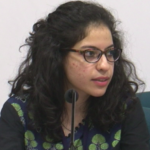
Asaf Ali Lone, Independent Researcher and Saumya Bhandari, Research Assistant, Ahmedabad University, Ahmedabad
Gender trolling is the extension of real world misogyny to online spaces. To understand gender-trolling, one needs to understand the architecture and nature of the Internet and social media and how they become the apparatus of subjection, surveillance and censorship. Social media are techno-social systems that lie at the intersection of technological infrastructure and human interaction.
Trolls are characterized by three main factors – one, creating and defining the victim; two, exercising power and dominance by being rude and threatening; and thirdly, hunting in packs. Gender trolling is oftentimes carried out by multiple people simultaneously operating in a concerted fashion to hound their target, usually women who are seen as opinionated in online spaces. This is indicative of widespread misogyny.
Identity is central to the act of trolling. This was observed in the case of Sujatha Surepally, a dalit activist, whose caste identity was constantly invoked by her trolls. In another case, a transgender activist was added to a WhatsApp group and mercilessly abused on it. Through cases like this, the idealogical mindset of the troll – a masculinized, patriarchal fundamentalist, professing an abiding fixation with women’s morality – becomes evident.
Open discussion
The chair, Bishakha Datta, shared some reflections before opening up the floor for discussion.
– Women who face gender-based cyber violence experience a sense of powerlessness when they are not able to effectively articulate feminist language and stand up to the abuse.
– Structures of patriarchy arising and establishing in the online blur the distinction between the real and virtual. But at the same time, the online induces a dis-inhibition that permits people to act out violence relatively easily in a manner not observed in offline spaces.
– The link between anonymity and violence needs to be examined closely before it is seen as enhancing online violence.
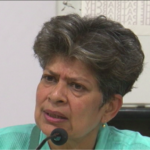
Comments from the floor
There was a question from the floor on whether the sharing of memes is connected to the structure of the platform where the sharing happens. Aalen Issac responded that memes are usually shared on social media platforms. So their reach is influenced by the popularity of the platform. While it is true that memes may seem ephemeral, this is canceled out by the viral, and hence extensive, circulation and re-circulation on the Internet. One participant reflected that when we undertake to do cartographies of the online, one of the locations that is often missed is that of digital janitors or the women in charge of filtering out images from platforms. In thinking of feminist frameworks, violence at the front-end and what goes on at the technological back-end must both be accounted for.
